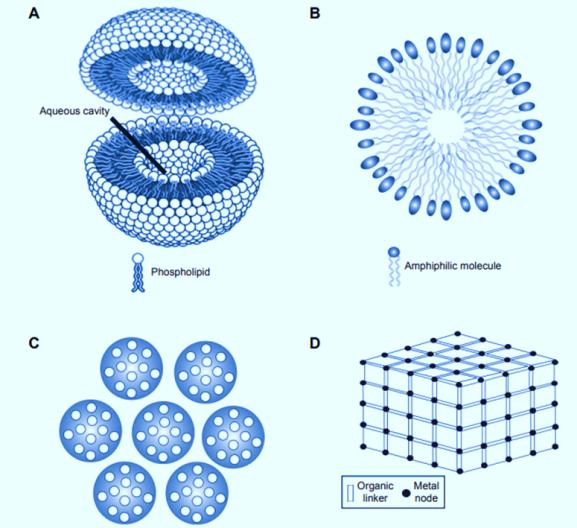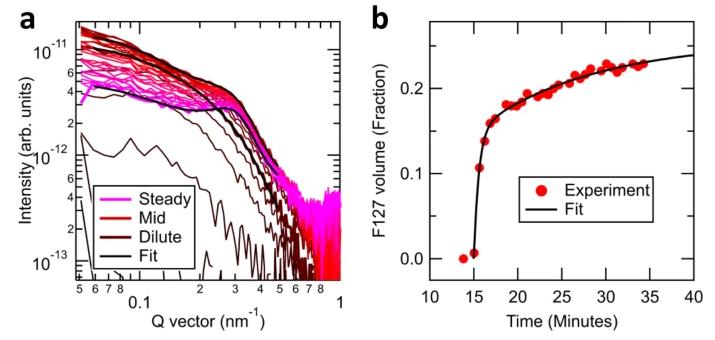Characterization of APIs and Nanocarriers
Inquiry
There are advantages to using nanocarriers for drug delivery, including high stability, target-related specificity, and the ability to deliver both hydrophilic and hydrophobic drug molecules. Nanocarrier materials have different physicochemical properties in terms of size, surface properties, shape, composition, molecular weight, purity, stability, and solubility, which are key determinants of their physiological behavior. Rigorous nanocarrier characterization methods are crucial to ensure quality and safety and to enable rational development of nanoformulations. CD Formulation can provide our clients with nanoproperty characterization services for APIs and nanocarriers to meet the different requirements using our advanced characterization technology and equipment.
Our Nanoproperty Characterization Services
Nanocarriers commonly used for drug delivery include liposomes, solid lipid nanoparticles and micelles, silica nanoparticles, metal-organic frameworks (MOFs), silica nanospheres, nanocrystals, etc.
 Fig. 1. Schematic nanocarrier structures: (A) liposome, (B) micelle, (C) silica nanoparticles, and (D) metal-organic framework. (Eloísa Berbel Manaia, et al. 2017)
Fig. 1. Schematic nanocarrier structures: (A) liposome, (B) micelle, (C) silica nanoparticles, and (D) metal-organic framework. (Eloísa Berbel Manaia, et al. 2017)
CD Formulation, as a leading pharmaceutical analytical laboratory services company, can provides you provide you with comprehensive, innovative, and timely solutions and helps you quickly characterize the APIs and nanocarriers, including but not limited to particle size and distribution, shape, zeta potential, morphology, etc.
- Particle Size and Distribution
- Zeta Potential
- Nanostructure
- Crystallinity
- Molar Ratio of Drug to Polymer
- Morphology
- Surface Property
- Polymer Mean Molecular Weight and Distribution
Our Characterization Techniques for APIs and Nanocarriers
Nanocarriers have special physical and chemical properties due to their special carrier structures, and we must understand how their properties affect their distribution and behavior in the body. Therefore, it is necessary to identify suitable, reliable, and robust techniques that can be used for the characterization of nanoscale properties. Based on our advanced equipment, CD Formulation also explores and researches additional characterization techniques to determine the size, surface properties, shape, composition, purity, stability, and dispersion state of nanosystems.
X-Ray Scattering
Through X-ray scattering, we can obtain structural information according to different nanocarrier length scales, such as atomic structure information, organization and structure of samples.
X-Ray Diffraction (XRD)
In the pharmaceutical industry, X-ray diffraction (XRD) is the primary method used to assess the crystallinity of APIs, nanocarriers, and excipients. It is also utilized to identify crystalline phases of impurities that may arise during drug production. We can use XRD to gather various structural details such as crystallite size, degree of crystallinity, orientation, crystalline phase, and chemical composition, depending on the scale of the crystalline nanocarriers (e.g., mesoporous materials and crystalline lipid nanoparticles).
Small-Angle X-Ray Scattering
CD Formulation uses XRD to identify the type and phase of crystals, crystallinity and orientation, chemical properties, content of compounds, and crystal size of liquid crystals, liposomes, micelles, and mesoporous materials. In addition to the assessment of shape and size, we can use this technique to explore the spatial distribution of particles in a medium, providing detailed information about their interactions and average correlation distances.
Dynamic Light Scattering (DLS)
With the help of DLS, we can measure particle size and size distribution for liposomes, solid lipid nanoparticles and micelles. We have also used DLS to study the stability of formulations over time and/or temperature, to identify the presence of aggregates in formulations prepared through different procedures, and to rapidly determine the particle size of monodisperse samples of formulations.
Scanning Electron Microscopy (SEM)
The use of SEM has been mainly limited to the characterization of microspheres and microcapsules, and cryo-SEM has been used for the characterization of microspheres and nanoemulsions. We can test particle size and size distribution, structure/shape, stability, and identification of elemental composition for micelles and mesoporous materials by SEM.
Transmission Electron Microscopy (TEM)
TEM is the most commonly used characterization method in the development of nanomedicine, including the study of drug nanocarriers. We can provide customers with measuring particle size and size distribution, structure/shape, and stability for liposomes, solid lipid nanoparticles, micelles, and mesoporous materials. We can also use TEM to detect changes in nanoparticle morphology after incorporating different concentrations of drug.
Porosimetry
Porosimetry is a useful technique for characterizing mesoporous materials, and we can provide a wide range of information including pore size, pore volume and surface area of the sample based on this technique.
In addition to the above characterization techniques, we also explore other suitable techniques for nanoproperty characterization, such as polarized light microscopy (PLM), electrophoretic light scattering (ELS), and crossed polarized light microscopy, IR, etc.
Why Choose Us to Characterize APIs and Nanocarriers?
- We hold advanced instruments and equipment and are also able to provide suitable characterization of APIs and nanocarriers covering particle size and distribution, zeta potential, morphology, shape, etc.
- We have a strong, experienced and elite team of experts, and they can provide a quick response to your detailed requirements for the nanoproperty characterization services for APIs and nanocarriers immediately.
- We also explore and research a variety of characterization techniques for APIs and nanocarriers, including X-ray scattering, XRD, SEM, TEM, PLM, ELS, etc.
Published Data
Technology: Resonant soft X-ray scattering (RSoXS) technique
Journal: Nature Communications
IF: 16.6
Published: 2021
Results:
The authors use X-rays that resonate with molecular bonds to demonstrate an in situ nanoprobe that requires no labels and enables data collection times in seconds. Simultaneously, an analytical spectroscopic model was constructed that uses resonant soft X-rays to quantify the structure, molecular composition, and dynamics of the copolymer micellar drug delivery platform. The authors applied this technique to hydrocarbon-sequestering polysoap micelles and found that key organic capture domains do not merge upon aggregation but instead remain distinct single-molecule cores. This property improves its hydrocarbon sequestration efficiency in applications such as oil spill remediation and drug delivery. This technique enables manipulative, chemically sensitive studies of any label-free, aqueous molecular nanostructure. The results of in situ nanodynamics measured on unlabeled polymer micelles are shown below.
 Fig.2 Aqueous F127 micelle dynamics. (Terry McAfee, et al. 2021)
Fig.2 Aqueous F127 micelle dynamics. (Terry McAfee, et al. 2021)
CD Formulation can help global researchers and pharmaceutical companies to characterize the physical and chemical properties of APIs and nanocarriers depending on our advanced characterization technology platform and strong analytical capabilities. If you are interested in our nanoproperty characterization services, please do not hesitate to contact us for detailed communication.
References
- Eloísa Berbel Manaia, Marina Paiva Abuçafy, Bruna Galdorfini ChiariAndréo, et al. Physicochemical characterization of drug Nanocarriers. International Journal of Nanomedicine. 2017, 12:4991-5011.
- Terry McAfee, Thomas Ferron, Isvar A. Cordova, et al. Label-free characterization of organic nanocarriers reveals persistent single molecule cores for hydrocarbon sequestration. Nature Communications.2021,12:3123.
How It Works
STEP 2
We'll email you to provide your quote and confirm order details if applicable.
STEP 3
Execute the project with real-time communication, and deliver the final report promptly.
Related Services


 Fig. 1. Schematic nanocarrier structures: (A) liposome, (B) micelle, (C) silica nanoparticles, and (D) metal-organic framework. (Eloísa Berbel Manaia, et al. 2017)
Fig. 1. Schematic nanocarrier structures: (A) liposome, (B) micelle, (C) silica nanoparticles, and (D) metal-organic framework. (Eloísa Berbel Manaia, et al. 2017) Fig.2 Aqueous F127 micelle dynamics. (Terry McAfee, et al. 2021)
Fig.2 Aqueous F127 micelle dynamics. (Terry McAfee, et al. 2021)
